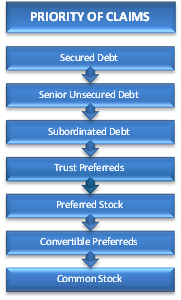By
LAURA SAUNDERS
January 8, 2016
A
new year usually brings tax changes, and 2016 is no exception.
The
good news is that last month, in the nick of time, Congress enacted permanent
extensions of several popular provisions, including the American Opportunity
tax credit, a higher-education benefit; the IRA charitable transfer provision
for people 70 1/2 and older; certain mass-transit benefits; a child tax credit;
and the ability to deduct state sales taxes instead of income tax on the
federal return.
No
longer will people using these benefits have to bite their nails waiting for
lawmakers to re-enact them—especially if a provision has already expired, as
happened several times over the past decade.
Here
are other changes to be aware of:
Affordable Care Act penalty
tax. For people who don’t have
ACA-approved health insurance, the payment is rising steeply once again. Such
taxpayers often owe a “shared responsibility payment” that is either a flat
assessment or a percentage of income, whichever is higher. Roberton Williams, a tax specialist with the Tax Policy
Center in Washington, says the percentage method will apply to virtually all
higher-income households and even many single filers earning above $40,000.
In
2016, the flat assessment more than doubles. It is now $695 per individual, up
from $325 last year, with a maximum of $2,085 per household. The
percentage-of-income payment rises to 2.5% of income from 2% last year, with a
projected maximum of about $13,400 per household.
Members of some groups
aren’t subject to the payment, including certain religious groups and people
covered by Medicare or Medicaid. The Tax Policy Center has posted anACA penalty calculator on its website.
Tax rates haven’t changed for
2016, but brackets have reset upward because of inflation indexing.
Tax brackets. Because the U.S. tax code is progressive, higher income
is taxed at higher rates—after deductions, exclusions and other adjustments.
Tax rates haven’t changed for 2016, but brackets have reset upward due to
inflation indexing. The top statutory rate of 39.6% now kicks in above $466,950
of taxable income for married couples filing jointly and $415,050 for singles.
“It’s
good to know your top bracket, because it lets you estimate the value of a
deduction,” says Greg Rosica, a partner with the accounting firm EY.
In other words, $100 of a write-off could save as much as $28 of tax for
someone in the 28% bracket.
A glance at the tax
tables also serves as a reminder of the code’s unequal treatment of married
couples versus single people who are above the 15% bracket. This anomaly raises
tax bills substantially for some couples, especially if both partners have
similar incomes, and lowers them for others. To find out if you are affected,
see the Tax Policy Center’s marriage tax calculator.
Investments. The favorable rates on long-term capital gains (for
investments held longer than a year) and certain dividends also haven’t changed
for 2016, but inflation adjustments have lifted the brackets.
This
year the 0% rate, which applies to both types of income, ends at $37,650 of
taxable income for single filers and $75,300 for couples. Meanwhile, the top
rate of 20% kicks in at $415,051 for single filers and $466,951 for couples.
In
addition, some investors owe a 3.8% surtax on their net investment income. The
threshold is $250,000 of adjusted gross income for married couples and $200,000
for singles.
This
levy can cast a wider net than it appears to at first glance. That is because a
taxpayer’s adjusted gross income is often much larger than taxable income, as
it excludes Schedule A write-offs such as for mortgage interest, state taxes
and charitable gifts. In addition, the thresholds aren’t indexed for inflation,
so more investors could owe this surtax in 2016.
Mileage deductions. Lower gas prices are a boon, but they translate to
lower mileage deductions on tax returns. For 2016, the business rate is 54
cents per mile driven versus 57.5 cents per mile last year.
The
write-off per mile driven in the service of a charitable group is 14 cents this
year, and the rate per mile driven for moving or medical purposes is 19 cents.
Be sure to keep records to document these deductions.
Estate and gift tax. For 2016, the estate and gift tax exemption rises
to $5.45 million per individual, up slightly from the 2015 level. This means
the exemption per couple is now nearly $11 million, and only some 4,400 people
will owe this tax for 2015, according to estimates by the Tax Policy Center.
The
annual gift exclusion of $14,000 isn’t changing for 2016. This provision allows
a giver to make tax-free transfers of up to $14,000 a year to each recipient,
and one partner of a married couple can transfer up to $28,000 per recipient if
the other spouse doesn’t use the break.
Corrections & Amplifications:
The 28% tax bracket for single filers begins at $91,151. An earlier version of the chart accompanying this article incorrectly gave the figure as $90,151. (Jan. 8)
The 28% tax bracket for single filers begins at $91,151. An earlier version of the chart accompanying this article incorrectly gave the figure as $90,151. (Jan. 8)




 FactSet
FactSet FactSet
FactSet












